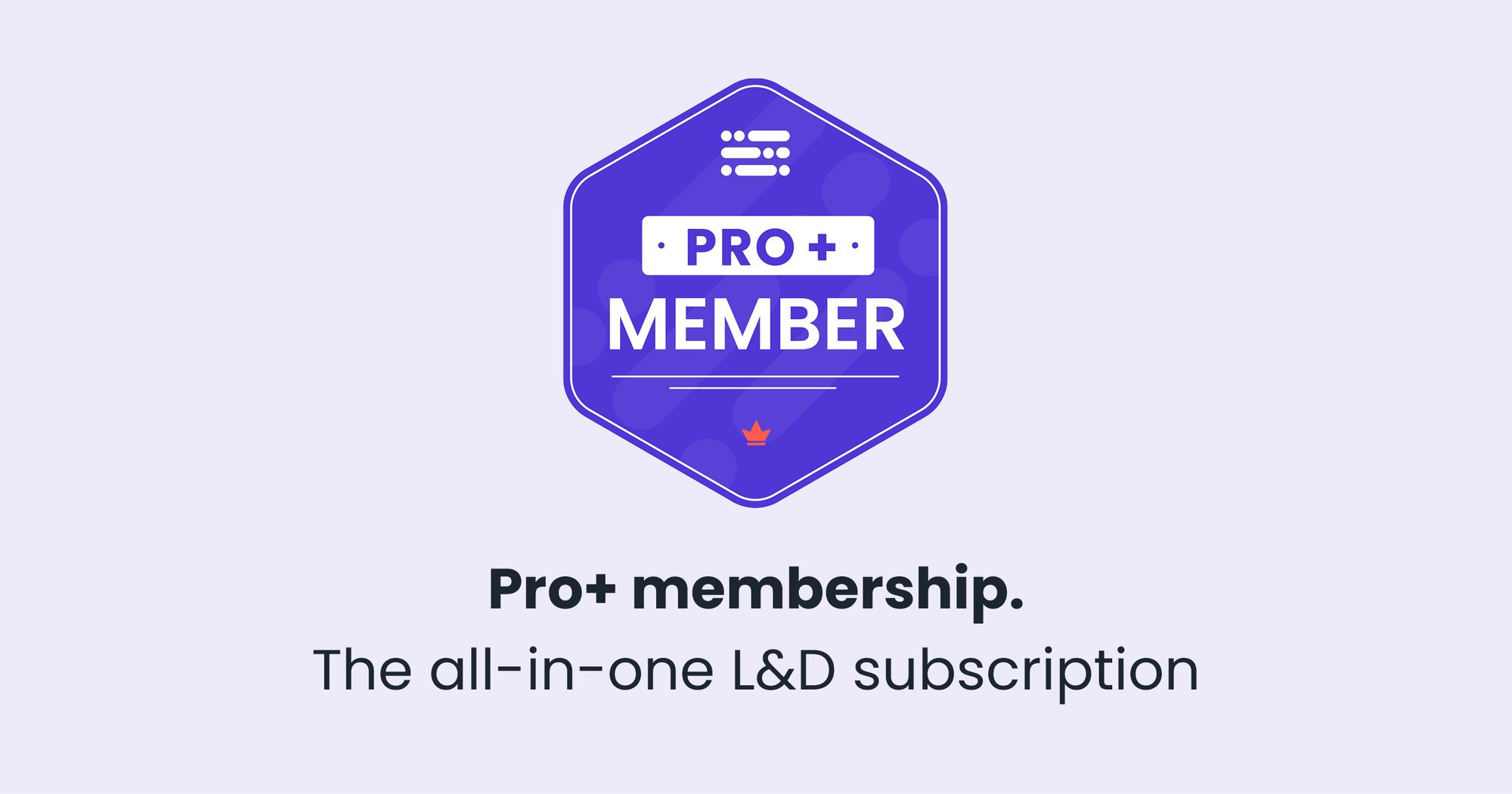As the President and Founder of LIVE24 Communications, I specialize in creating and scaling programs to secure earned speaking opportunities at industry events.
I've been doing this for about 20 years, mainly working with tech brands, and placing speakers at all levels. My company has experience working across every sector there is, including the developer industry.
This is the only thing that we do, and because of that, we've built up some pretty good relationships around the world with the top event organizers.
I'm really excited about this because, for many, I think it's seen as a bit of a mystery. How do you get those earned speaking opportunities on agendas? I'm going to arm you with what you need to get started, and hopefully we're going to give you a pretty good framework.
What is an earned speaking opportunity? And why do it?
So, first things first; what is it and why do it?
When we talk about an earned speaking opportunity, we mean speaking opportunities that are proactively obtained outside of any paid or sponsorship commitment. This is outside of any sponsorship commitment, purely based on merit.
In the developer landscape, there are hundreds of events around the world every year, so speaking at these events is great awareness for your brand, your products, and your community, and it's also done in a very credible way.

It can also be very cost effective. Often, the cost for a program like this can be less investment than a single sponsorship at one major event. So, there's incredible value in doing it if it's done well.
Just to be clear, this isn’t a bottom-of-funnel tactic. This is a top-of-funnel tactic focused on awareness. It's important to keep that in the back of your mind.
Getting started: Defining your brief
Naturally, you're going to want to start with defining your brief. To do this, we use a very simple briefing questionnaire which asks some very simple questions like:
- Who's your target audience?
- Who is that you want to reach?
- What's your objective for getting out there and speaking at events?
- What's your target geography?
- What are the topics and themes that you want to get out there and speak about
It's important to have this as a foundation of your program because we're going to refer back to it a few times.
Three key elements to run a developer program
In addition to the brief, you need three fundamental things to start a program such as this.
You need a speaker pool, which can be one speaker, but ideally more. You need a target list of events, and you need content. And by that I mean talk abstracts, which is really no more than a title and maybe a 150-250 word outline of what it is that you're going to cover.
We're going to go into more detail about all of these three different areas throughout this talk. But once you have these three elements in place, you're at the jumping-off point where you can actually get to proactive pitching and submitting to events. And then you're up and running.
And the point of time from when you define your brief up until you get those three things in place, we call that the ramp up phase.
Speaker pool
So, let’s jump into the first of the three elements, which is sourcing speakers for your program and building that speaker pool.
The first thing you want to do is identify and evaluate the subject matter experts in your organization. And in doing so, you want to choose people whose expertise aligns well with thought leadership, because that's what we're ultimately trying to do.
You want to include people at different levels if possible. This’ll broaden the spectrum of events to allow more reach and awareness and also allow you to scale. It's great to have people at the highest level, but you want people at every single level so that your program can scale.
Diversity matters, not just because it's the right thing to do, but more and more organizers are aiming for diverse agendas, not only for gender parity, but people from all walks of life. And they even go so far as to ask if you're a member of an underrepresented group when you're filling out a Call for Speakers form online.
Engagement is probably the most important part. You want to make sure that you're finding speakers and subject matter experts who are truly bought into the idea of speaking.
You're going to have much more success with people who are keen and willing to get out there and speak. They'll collaborate with you on abstract content, and you're going to have a lot more success with them than those who aren’t really interested in doing it, but have been told to do so.

Target event list
At the same time, you can start to build your target event list. Building an event list can be a very labor-intensive exercise, but it's critical that you invest the time and effort upfront to do it right, or get someone to help you do it.
Broadly speaking, we follow a two-step process to build out a target event list. It starts with creating a long list. For this, we use simple keyword-based event research with search engines.
The first thing you want to do is draw up a list of what keywords pertain to the topics and themes that you want to speak about. For example, if you want to speak about DevOps, naturally, DevOps would be a keyword that you’d use.
Then, you want to add qualifying keywords in your search query such as conference, congress, summit, etc. That's going to pull up a lot of events, but you just want to go through each of those and put them down in a database format that you can work on from there.
Once you've created that long list, you can move on to creating your shortlist. Depending on the size and scope of your brief, you could have hundreds of events, so further evaluation is needed to ensure that the long list aligns to your brief.
When looking at all the different events you have, take a closer look at each of them and determine whether it attracts your target audience, if it’s within your target geography outlined in your briefing questionnaire, and the focus of the event and its theme aligns with the topics and themes that you want to speak about.

In doing that, you're casting the net very, very wide when you begin, and then doing that further level of due diligence to really narrow down the target list. And, at the end, you should feel comfortable that if you were to secure an opportunity for any of the events on the shortlist, you'd feel pretty good about that.
One other consideration with events is that bigger is not always better. People tend to gravitate towards larger industry events. Sometimes, 30 of the right people in the room can be better than 300 of the wrong people in the room. You can also get lost in larger events, too because you’re competing for a lot of share of voice.
One of the most common issues people come to us with is that they know the events they know about, but they don't know the ones they don't know about, and they're very nervous about missing out on all the other good events that are out there.
So, we like to cast the net quite wide again, just to make sure that we capture absolutely everything that's out there that aligns broadly with our target topic areas. And then when we do that second round of due diligence and create the shortlist, we can check out the ones that maybe don't align fully to the brief.
Doing this process is quite labor intensive, but it means that at the end of it you have a pretty good comfort level, you've got all the events that are out there, and you're not missing anything.
Talk abstracts
So, you've got your speaker pool, you've got your target event list, and now you're on to writing some talk abstracts. You need something to actually pitch to the event organizers.
This is probably the most important part of the process, particularly for developer events, which receive far more submissions than they can ever accept, particularly for the larger events. You really have to stand out from the crowd.

The good news is that most people's abstracts that are submitted to these events are not that great. So, if you can focus on doing a few key things, you're already going to be ahead of the game.
Before we get into that, it's very important to understand why people attend events, and that is to learn. People want to go to an event and hear from thought leaders in the industry to find out how they’re doing things, how they've overcome certain challenges, etc., so that they can go and take those learnings and apply them to their own organization.
It's through the lens of learning that conference organizers are always going to be looking at your submission. What’s my audience going to learn from that?
A golden rule is to never, ever sell. Don't talk about anything too self-serving. It's a red flag for organizers. And remember, people are there to learn. They don't want to be sold to. They want to learn stuff. So resist that temptation to sell.
With all that in mind, we've developed a proven format for what we consider a great talk abstract, and you can break it down into four different areas.
The first one is coming up with a title that describes what they'll learn. ‘How to do x’ or ‘three steps to overcome y’ is a good way to start it.
Remember that, for the people who are looking through all of these abstracts to decide which ones go on the agenda, sometimes there are hundreds they have to look through, so they're not reading all the abstracts. They're scanning through the titles for the ones that look good, and then they'll read further if they see something they like.
So, have a very descriptive title that gives an idea of what people are going to learn from that talk.
Going into the abstract itself, you want to start by introducing some sort of problem or challenge. It could be an industry challenge, it could be societal, but state some sort of problem statement upfront.
The middle part of the abstract is introducing some sort of strategy or solution to overcome that challenge. And then the final bit, as we said before, is really focusing on those key learnings. We want to make it very clear what people are going to learn from the session and take away.

Proactive pitching and submitting to target events
Now that you've done all the heavy lifting to get those three fundamental things in place and you've got an engaged speaker pool, you've built your target list, and you've written some winning abstracts, you can get to the fun part, which is pitching and submitting to target events.
There are typically two ways that organizers source their speakers to build their agendas.
Online call for speakers process
The first is an online call for speakers process. Overwhelmingly for developer industry events, this is the process they use, probably in excess of 90%.
The process begins by working chronologically through your target list to track all the deadlines for the call for speakers for each of the different events.
When you're doing so, look at the call for speakers information provided on the website and pay attention to that detail because they’ll usually do a pretty good job of outlining what they're looking for, be it the type of presentation, format, topics, themes, and even giving examples of past successful talks that have been accepted. It’s always a good idea to really pore over that and look at it in great detail.
What you're doing then is taking that information on the call for speakers and you're cross-referencing that with the topics and themes of the abstracts that you've already written. If you see alignment between those two, then it's probably worthwhile submitting that abstract.
A quick tip: if the event has happened before, then look at the sessions that were accepted the previous years. It's often a really good guide to the style of the abstracts that’ll appeal to them.

Private and direct speaker outreach
The other way is less often used for developer events, but I think it's important to cover. It’s private and direct speaker outreach.
If you're pitching to an event that doesn’t have an online call for speakers process, the process is slightly different and a bit more proactive. So, they're not going to give you anything online. You’ll have to proactively reach out to the organizer, confirm if they're willing to accept speaker proposals, how they’d like that done, and confirm their planning timelines.
For most event organizers, it's usually about four to six months in advance of the event date for this process.
Then it's going to be up to you to proactively create a pitch email to send to them. The pitch email should be a short cover email. You should also have the speaker details, such as name, title, bio, and headshot. You want to make sure that with what you're pitching, the level of the speaker matches the level of the other speakers that they typically accept, and include any speaker experience that they've got.
You can also list a few conferences where they've spoken in the past. If you have a video of them speaking at a past conference, that's always really good to include as well. It just shows a level of professionalism and comfort with being on stage.
And finally, you want to include the abstract that you're proposing. Don't be afraid to look at the topics and themes. If you need to edit your abstract slightly to align a bit more, then do that. That always helps.
The key to all of this is relevance. You want to make sure that your topic is a good fit for the focus of the event and that your speaker is in the right role and right level. Don't waste the producer's time with a really sloppy pitch because not enough due diligence is going into the event.

Leveraging existing speakers
Now, if you've been pitching your abstracts for the events, hopefully you've got some opportunities so far, which is great. You can then start to think about how you want to actually get more value on those speaking opportunities and ways to leverage them.
Three great ways to do that are through media relations, social media, and blog content.
With media relations, any event of a decent size is going to have some press that attends the event. Some even have media partners. If you ask the organizer for a list of the confirmed press that are going to attend the events, you can then share that with your PR team or whoever’s doing PR for you. They can try and set up some media briefings on site for your speaker.
Most event organizers these days will be very happy to create branded social media assets or social media cards with your speaker for promotion on their own social channels, but also on yours as well. And if they're recording a video of the presentation or your speaker’s talk, they'll often send that to you to share on social media, or at least snippets of it after the event as well.
And, finally, blog content or any other long-form content for that matter. The work that you put into developing the abstract and the presentation is often great groundwork for creating longer-form content that you can use. You can either put that out and see some interest before the session, or you can do it after the session with the speaker's thoughts and how the event went.

All of these are easy things to do, and they just add a little bit of extra value.
Measuring the success of your program
So now you've got your program up and running and you've been pitching to target events, you want to be able to measure the success of your program.
One obvious metric that a lot of people gravitate towards is the number of speaking opportunities that you secure within a given time period. Over the years, we've learned that the number of opportunities is not a terribly reliable metric, as there are too many variables outside the control of most programs that can impact that.
For example, the number of speakers coming in and out of a program, the engagement level of those speakers, the quality and availability of content with which to develop abstracts, strategic shifts, or any change in strategy that might impact your ability to pitch different events, and also the number and timing of events that align with your specific priority.
All of those things are shifting all the time, which means you might not have the opportunity to pitch to as many events as you'd like.
When it comes to quantitative metrics, what we like to use instead is what we call placement rate. This means tracking the number of opportunities that you secure as a percentage of the number of events you successfully submit to. This is a fair assessment of your program's success because it accounts for all those different shifts and variables that I mentioned before.

The other metric we use is ESVE, which stands for ‘estimated sponsorship value equivalent.’ This is a dollar-based guideline estimate of the value of an earned speaking opportunity if it was secured through or purchased through sponsorship. It’s a guideline estimate only, and shortly, I'll give you a little bit more detail about the criteria we use to calculate that.
When it comes to qualitative metrics, naturally, you want to keep a close eye on the quality of the opportunities that you're securing. Now, these’ll be a little bit different depending on the program, the company, and what your goals are. But some common examples are speaker feedback, the connections people made, and media opportunities.
You want to think about the relevance of the audience that didn't match what the organizers promised. What was the level of interest and engagement from the speakers? Were there any potential media relations opportunities that came off the back of the speaking opportunity? Also, look at things like connections, introductions, or contacts made at the event.
For the speaker feedback and the connections, we like to use a tool which is very simple; a speaker feedback form. It's an online form that our speakers can fill out a day or two after they're finished with the speaking opportunity.
The form simply asks them to rate the event in terms of things like the relevance of the target audience, how good the other speakers were, the networking potential, and also to add things like any contacts that they made that were worthwhile.
Critically, the last question we ask is, do you think that we should speak at this event again? That's often the litmus test. It's just a very simple way to capture the feedback from the speaker as well.
Estimated sponsorship value equivalent (ESVE)
Below is the estimated sponsorship value equivalent or ESVE that I mentioned. Again, this is a guideline estimate and should only be considered as much.
Considering the different criteria we use to calculate this, we look at:
- The existing sponsorship packages from the event as a bit of a cost benchmark.
- The tier of the event in terms of its audience level and the level of the other speakers. We consider its size and the scale of the event, as well as the value of the registration to attend, which most speakers get for free.
- Experience from similar types of events and their cost benchmark.
Taking all these things together, you can usually get a pretty good idea of the value of the opportunity if you were to purchase it through sponsorship, which isn’t something that a lot of organizers typically do. Normally, it comes as part of a larger package that includes branding and lots of other stuff.
Case study: Cisco
To see all of this stuff in practice, we started a pilot program for the team responsible for Cisco's developer community back in 2017. The aim was to determine whether a program like this could work, deliver results, and scale. We're still at it six years later, so I think that the answer to all of those questions is ‘yes.’
In those six years, we've secured 153 speaking opportunities at over 120 different events for over 2 dozen speakers, with an average placement rate of 36%, and an estimated sponsorship value equivalent of over $1,000,000.
Now, let’s see some of the metrics that I talked about earlier in practice. This is taken from our most recent summary report for Cisco and its developer program:
You can see that the number of opportunities was 42 for the year, at 32 different events, for 11 different speakers. We pitched a total of 97 events to get those opportunities.
We had a placement rate of 43%, and the program's ESVE was $312,000. So these are the sort of quantitative metrics we talked about earlier in practice in a real program that we've been doing for about six years.
Evaluation of incoming speaking invitations
If you're in a lucky position to receive an inbound invitation to speak, it's important that you have a methodology for evaluating the event and the opportunity to make it worthwhile.
For a few lucky brands, and if you're a larger brand, this is the bigger challenge. It's not sourcing proactive opportunities, but rather having to deal with a huge influx of incoming invitations. The challenge is evaluating each one of those to figure out if it's a good event to speak at or not.
I wanted to include this just in case there's anyone that’s in this enviable position to have a lot of incoming invitations that they need to deal with.
So, how do you do that?
Well, we've been lucky enough to work with some larger brands who find themselves in that enviable position. And we've developed a process to intake, evaluate, and respond to those invitations in an effective manner.
It’s based on a foundational event evaluation framework that we can largely break down into three areas.
The first area is baseline indicators. This is where we start. And effectively, what we're trying to answer is, is this a decent event? We look at things like who are the delegates? Where are they from? What brands are they from? Who else is speaking? What level?

If there are any big-name sponsors on board, it usually indicates that they've done their own level of due diligence before putting some money behind an event.
There are lots of questions like this to determine whether this is going to be a decent event.
If it passes that test, we move on to the next part, which is the brief-specific indicators. And really, what we're trying to determine or answer at that stage is, is this relevant to our goals or objectives? You might have a great event, but if it's not focused on what you want to focus on, then you probably want to give it a miss.
If, however, it does align very nicely with your goals and objectives, then it's passed that test and you can move on to contextual indicators. These aren't as important, but sometimes there are some things that might make you more likely to participate at an event because of different contextual things.
For example, complimentary travel dates. An executive might be in the area where the event is taking place at the time. Or maybe there’s a customer or partner you want to get in front of who’s going to the event, which means that you might like to go there. There are lots of different reasons why you might think this is a good thing to do, all else being equal.
5 fundamental elements that are critical to program success
Just wrapping up, I’d like to cover a few fundamental elements that we've determined are critical to the success of a program over the years.
1. Engagement
As I mentioned earlier, find speakers who are interested in doing this and want to get out there and do it. You'll have far more success with people who are interested in doing it.

2. Get buy-in at the top level of the organization
This is always a good idea for any initiative, and it's no different with this type of program. Get the top people bought in and that’ll really help to move things forward.
3. Invest in presentation training
If the speakers that you’re sending out there aren’t trained and don't know how to present, you're not going to be putting your best foot forward.
It's a small investment to make, but a really good idea is just to make sure that when you're actually getting people out there, they're comfortable being on stage and delivering the right messages. It makes all the difference in the world.
4. Proper etiquette
If you do secure a speaking opportunity, there are a few things that you should consider. Courtesy and professionalism I think are a given, but responsiveness with the conference organizer is always appreciated. Respect their timelines. They'll send you a lot of information about timelines and when they need certain things.
And another critical thing is that, in the unfortunate event that a speaker needs to pull out of the event, do it as early as possible. Have a good reason, make sure you apologize profusely, and do your utmost to provide a replacement speaker in the same message that you're delivering.
You never want to leave a producer with a huge hole in their agenda three days before an event. So, it's just a little piece on etiquette there to really help the producer out and don't leave them in a tight spot just before the event.
5. Invest the time and energy up front
Once the heavy lifting is done with all of these things that we've gone through to set the program up and put the proper processes in place, with the right help, a program like this can run very, very smoothly for a long time and deliver incredible value.
Conclusion
There's no getting around the fact that a lot of work goes into creating and scaling a program like this. But I think the benefits can be huge, and it's important to follow the steps that we outlined today to make sure that you've got a solid process for your program.
This article is based on Dave Bertling's talk at the virtual Developer Marketing Summit in 2022. Pro and Pro+ members can enjoy the complete presentation – and hundreds of others – with Developer Marketing On Demand.
Have you considered upgrading to Pro+ membership? Get cutting-edge resources 365 days a year, including access to courses, to all templates and frameworks, to a mentor program, and more (including a free ticket to an in-person event).





